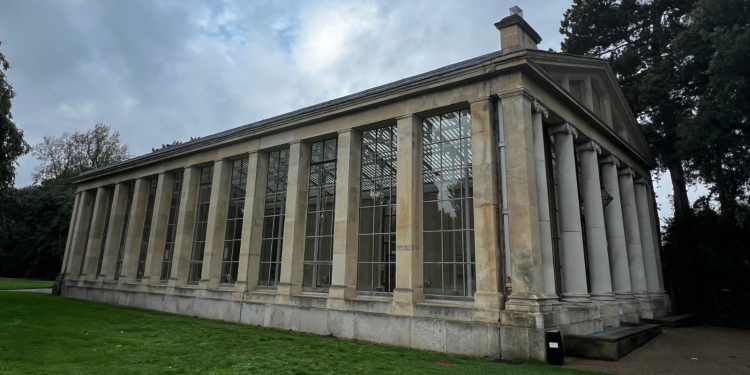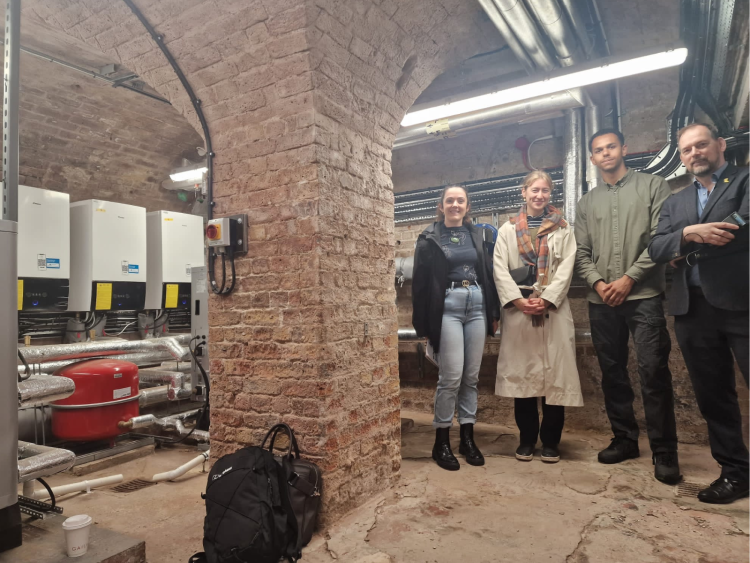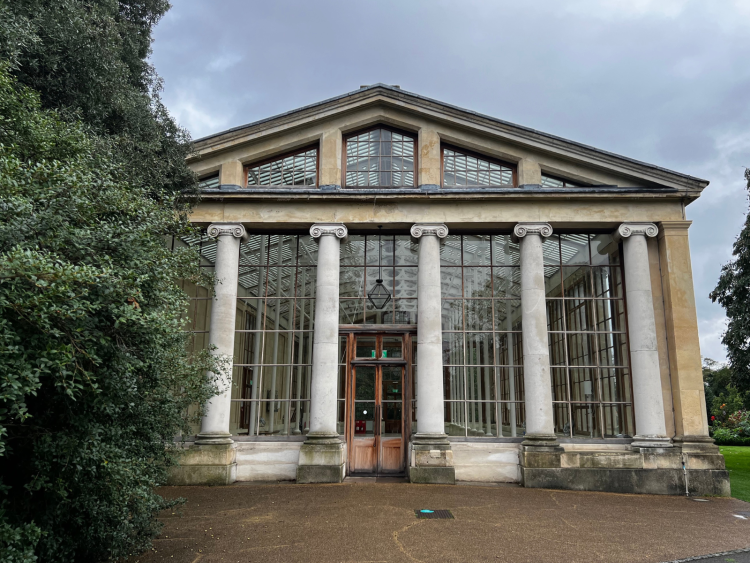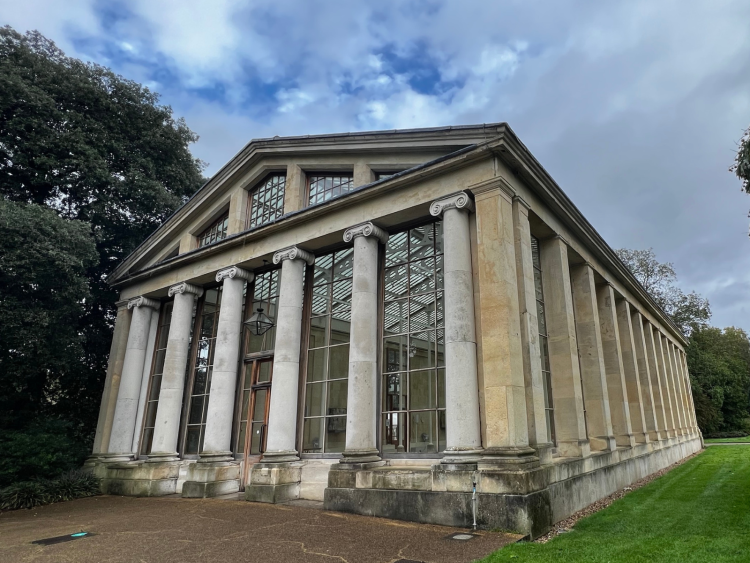Innovative approach to decarbonisation at the Royal Botanic Gardens, Kew

Salix are proud to announce the completion of a recent decarbonisation project at The Nash Conservatory at Kew Gardens, with funds delivered by Salix Finance on behalf of the Department for Energy Security and Net Zero.
A Grade II historical building, The Nash Conservatory was originally built on the grounds of Buckingham Palace and moved brick-by-brick to Kew in 1836. Today, it is a highlight for many visitors to Kew, and is often used for exclusive events and weddings.
The Public Sector Decarbonisation Scheme project stemmed from the need to replace two end-of-life fossil fuel boilers that provided heat to the building. However, teams quickly recognised an opportunity to broaden the project scope and look at more climate-friendly alternatives, rather than replacing the boilers with a like-for-like solution.
To complete the £447,348 of works, Kew was awarded £183,371 in funding.
Recently, Salix staff visited The Nash Conservatory to take a look at the project, and to speak with key project managers about the measures used, and how these support Kew’s ambitious sustainability goals to become climate positive by 2030.

From left: Communications Manager Ally O'Donnell, Client Support Officer Caterina Bartelloni and Energy and Carbon Analyst Mateen Sedenu with Kew Gardens' Senior Project Manager Carl Dodd.
Photo credit: Salix Finance.
An innovative approach was required for this work due to the historical significance of the building, plus consenting requirements for estates located on Crown-protected land.
Differently to usual, above-ground installation, the new heating system (air source heat pump) which replaced the boilers was installed underground in a bespoke ventilation system that would enable it to function appropriately.
In addition to these measures, the project retrofitted LED-lights to reduce electrical demand.
The successful implementation of the low-carbon solutions at The Nash Conservatory is a great example of how decarbonisation can be successful even in a complex planning environment.
It is expected that the upgrades to The Nash Conservatory will reduce emissions by 30-32 tonnes annually.

Photo credit: Salix Finance.
In May 2021 Kew launched a 10-year sustainability strategy to identifying broad sustainability ambitions, and is currently working hard to deliver several projects to support progress to reduce carbon emissions, ensuring that it’s operations and activities will be climate positive by 2030. Kew will also use its scientific and horticultural expertise and voice to advocate for sustainable action, to shape policy and influence behaviour.
Read more about Kew’s sustainability strategy.

Photo credit: Salix Finance.
About Royal Botanic Gardens, Kew
The Royal Botanic Gardens, Kew is a global plant and fungal science institution and a conservation charity, with a mission to protect biodiversity loss and create a world where nature is valued and protected by all. It has two botanic gardens, Kew Gardens in Southwest London and Wakehurst, a wild botanic garden in Sussex. Kew Gardens is one of the UK’s leading visitor attractions and houses the largest and most diverse botanical and mycological collections in the world.
